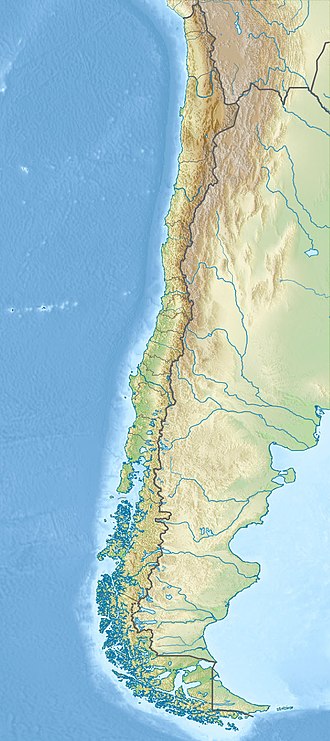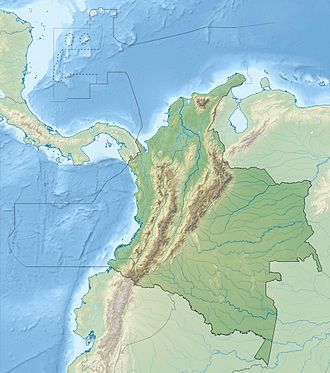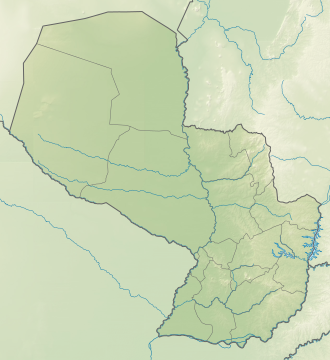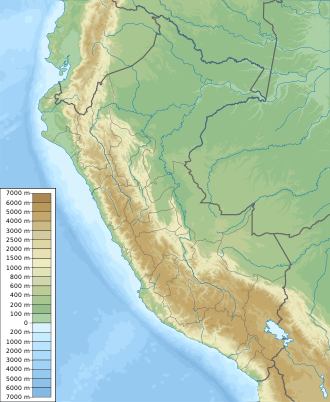| Age | Formation | Location | Present elevation | Fossils | Notes |
|---|
| Holocene | | Lagoa do Rumo/Chapada Diamantina, Baixa Grande, Bahia | 400 m (1,300 ft) | Stegomastodon waringi | |
| Late Pleistocene | | Garrincho, São Raimundo Nonato, Piauí | 390 m (1,280 ft) | Haplomastodon chimborazi | |
| Toca da Janela da Barra do Antoniao, São Raimundo Nonato, Piauí | 300 m (980 ft) | Haplomastodon sp. | |
| Gruta dos Brejões, Morro do Chapéu, Bahia | 500 m (1,600 ft) | Stegomastodon waringi | |
| Toca dos Ossos, Ourolândia, Bahia | 770 m (2,530 ft) | Stegomastodon waringi | |
| Fazenda Suse II, Vitória da Conquista, Bahia | 900 m (3,000 ft) | Stegomastodon waringi | |
| Janaúba, Minas Gerais | 580 m (1,900 ft) | Stegomastodon waringi | |
| Gruta do Ingá, Pains, Minas Gerais | 700 m (2,300 ft) | Stegomastodon waringi | |
| Poté, Minas Gerais | 560 m (1,840 ft) | Stegomastodon waringi | |
| Lapa do Caetano, Pedro Leopoldo, Minas Gerais | 685 m (2,247 ft) | Stegomastodon waringi | |
| Lajedo de Escada, Apodi, Rio Grande do Norte | 122 m (400 ft) | Stegomastodon waringi ("= Notiomastodon platensis") | |
| Caverna do Japonês & Nascente do Formoso, Serra da Bodoquena, Bonito, Mato Grosso do Sul | 373 m (1,224 ft) | Stegomastodon waringi | |
| Picos II, Piranhas, Alagoas | 255 m (837 ft) | Notiomastodon platensis | |
| Touro Passo Fm. | Touro Passo Creek, Uruguaiana, Rio Grande do Sul | 52 m (171 ft) | Gomphotheriidae indet. | |
| Pleistocene | | Aguas do Araxá, Minas Gerais | 973 m (3,192 ft) | Haplomastodon waringi, Stegomastodon waringi | |
| Inajá Fm. | Inajá, Pernambuco | 355 m (1,165 ft) | Haplomastodon chimborazi | |
| Lage Grande, Pesqueira, Pernambuco | 740 m (2,430 ft) | Haplomastodon chimborazi, Notiomastodon vidali | |
| Roçado & Quixabinha, Petrolândia, Pernambuco | 320 m (1,050 ft) | Haplomastodon sp. | |
| Santa Cruz do Capibaribe & Panelas, Pernambuco | 440 m (1,440 ft) | Haplomastodon sp. (="Stegomastodon") | |
| Águas Belas & Santa Maria da Boa Vista, Pernambuco | 360 m (1,180 ft) | Gomphotheriidae indet. | |
| Lagoa das Pedras, Salgueiro, Pernambuco | 430 m (1,410 ft) | Haplomastodon waringi | |
| Lagoa Lajinha, Petrolina, Pernambuco | 390 m (1,280 ft) | Stegomastodon waringi "(=H. waringi)" | |
| Fazenda Nova, Brejo da Madre de Deus, Pernambuco | 470 m (1,540 ft) | Stegomastodon sp. "(=Haplomastodon sp.)", S. waringi , Notiomastodon platensis | |
| Jirau & João Cativo, Itapipoca, Ceará | 65 m (213 ft) | Notiomastodon platensis | |
| Taguara/Araras, Nova Mamoré & Porto Velho, Rondônia | 150 m (490 ft) | Notiomastodon platensis | |
| Sitio Novo, Matina, Bahia | 490 m (1,610 ft) | Notiomastodon platensis | |
| Vitória da Conquista, Bahia | 950 m (3,120 ft) | Notiomastodon platensis | |
| Fazenda Caraíba, Coronel João Sá, Bahia | 266 m (873 ft) | Stegomastodon waringi, Notiomastodon platensis | |
| Serro do Gronda, Espírito Santo | 25 m (82 ft) | Haplomastodon chimborazi | |
| Taperoá, Paraíba | 530 m (1,740 ft) | Haplomastodon sp. | |
| Upper Ribeira, São Paulo | 360 m (1,180 ft) | Stegomastodon waringi | |
| Tortonian | Solimões Fm. | Río Acre, Acre | 274 m (899 ft) | Amahuacatherium peruvium | |
|



















